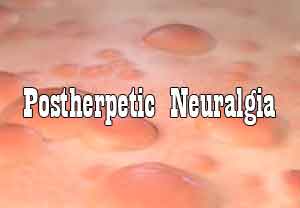- Home
- Editorial
- News
- Practice Guidelines
- Anesthesiology Guidelines
- Cancer Guidelines
- Cardiac Sciences Guidelines
- Critical Care Guidelines
- Dentistry Guidelines
- Dermatology Guidelines
- Diabetes and Endo Guidelines
- Diagnostics Guidelines
- ENT Guidelines
- Featured Practice Guidelines
- Gastroenterology Guidelines
- Geriatrics Guidelines
- Medicine Guidelines
- Nephrology Guidelines
- Neurosciences Guidelines
- Obs and Gynae Guidelines
- Ophthalmology Guidelines
- Orthopaedics Guidelines
- Paediatrics Guidelines
- Psychiatry Guidelines
- Pulmonology Guidelines
- Radiology Guidelines
- Surgery Guidelines
- Urology Guidelines
Inj Triamcinolone and Lidocaine effectively reduces pain of Postherpetic Neuralgia

Dr. Jiaxiang Ni and associates conducted a Randomized, single-center, clinical trial in Department of pain management of a teaching hospital in Beijing, China to assess the effectiveness of subcutaneous injection of triamcinolone and lidocaine for the prevention of Postherpetic Neuralgia, PHN in elderly HZ patients. The researchers have found that Subcutaneous injection of triamcinolone and lidocaine in the acute phase of HZ can reduce ZAP ( zoster-associated pain) more effectively than oral antivirals and analgesics alone, and maybe a feasible method to prevent PHN. The study has been published in Pain Physician.
Herpes zoster (HZ) is associated with inflammation of the peripheral nerves, which is considered to be an important cause of postherpetic neuralgia (PHN). Interventions aimed at reducing this inflammation could prevent PHN. One option is the epidural administration of corticosteroid and local anesthetic. However, several authors have reported a risk of arachnoiditis with epidural corticosteroids. Subcutaneous injection in an outpatient setting is a safer option. However, there is limited evidence of the effectiveness of this alternative for preventing PHN.
In the study patients with acute HZ with rash < 7 days (n = 100) were randomly assigned to receive either standard therapy (oral antivirals and analgesics) alone or standard therapy plus subcutaneous injection of triamcinolone and lidocaine. The severity of pain was assessed using a numeric rating scale (NRS) at enrollment and at one, 3, and 6 months after rash onset. Quality of life (QoL) was evaluated by the SF-36 before treatment and at 3 and 6 months after rash onset. The primary endpoint was the presence of zoster-associated pain (ZAP) at 3 months after rash onset.
At enrollment, all patients reported ZAP with average NRS scores of 6.64 ± 1.44 and 7.16 ± 1.22 in the standard group and subcutaneous group, respectively. At 3 and 6 months after rash onset, the pain had decreased in both groups, but the decrease was significantly greater in the subcutaneous injection group. At 3 months, 2 (4%) patients in the subcutaneous injection group vs. 10 (20%) patients in the standard group had ZAP with NRS > 3 (P = 0.014). Both groups showed significant improvement in QoL at 3 and 6 months. No patient had major adverse events related to the subcutaneous injection. The main limitation of the study was the absence of a placebo subcutaneous injection in the standard group.
The authors concluded that Subcutaneous injection of triamcinolone and lidocaine in the acute phase of HZ can reduce ZAP more effectively than oral antivirals and analgesics alone.
For further reference log on to :
https://www.ncbi.nlm.nih.gov/pubmed/28727702

Disclaimer: This site is primarily intended for healthcare professionals. Any content/information on this website does not replace the advice of medical and/or health professionals and should not be construed as medical/diagnostic advice/endorsement or prescription. Use of this site is subject to our terms of use, privacy policy, advertisement policy. © 2020 Minerva Medical Treatment Pvt Ltd